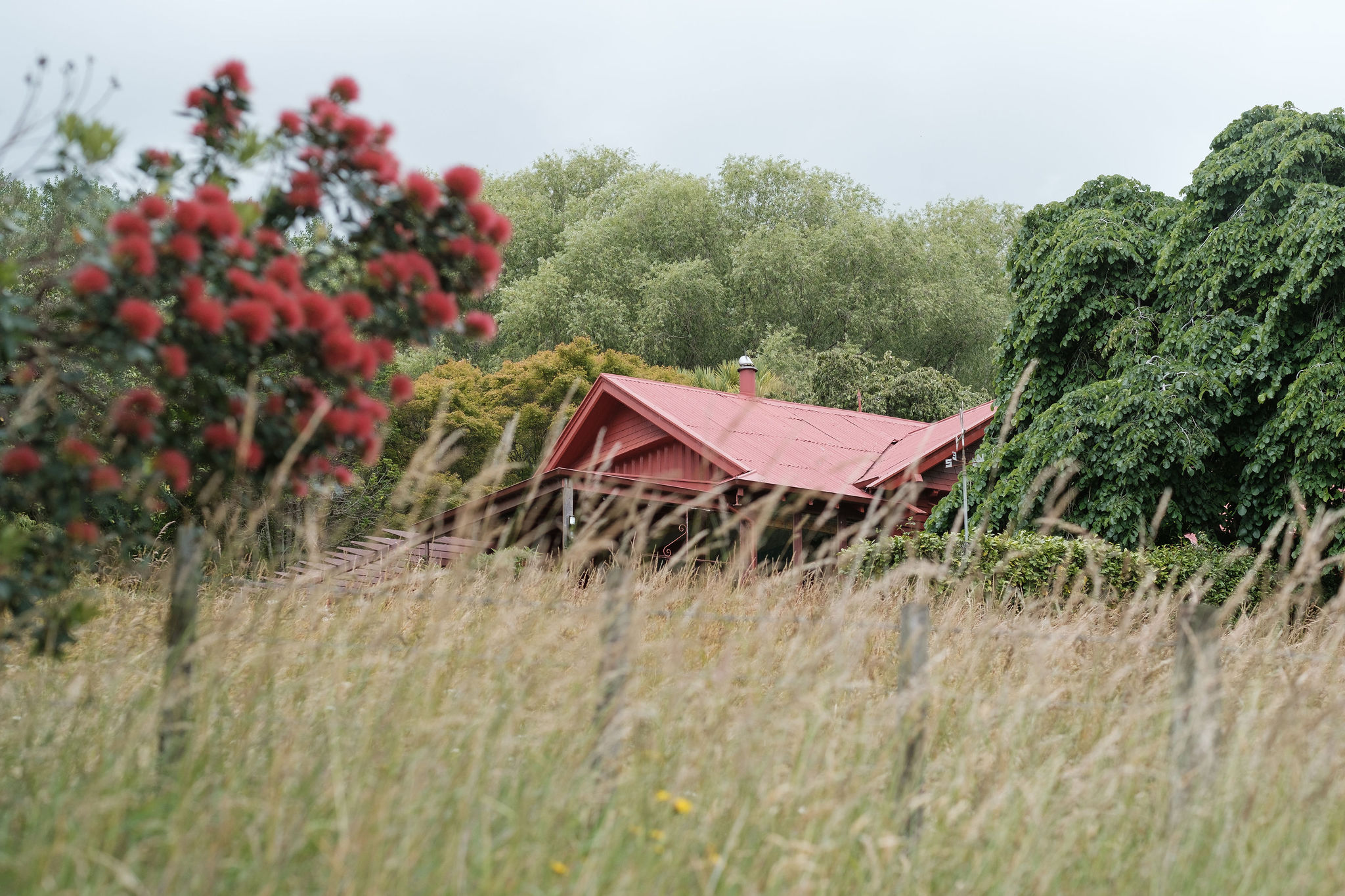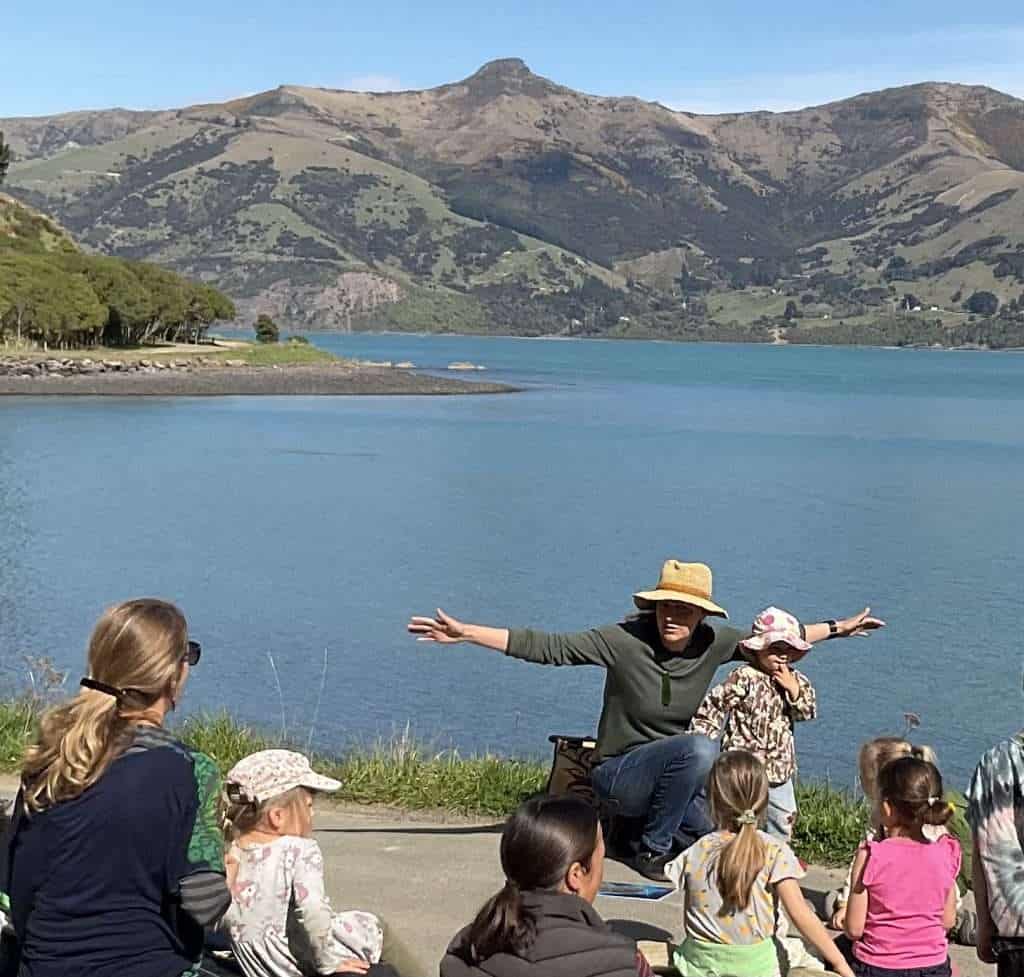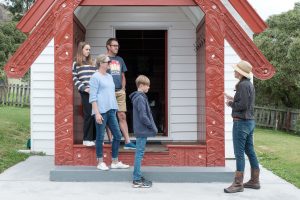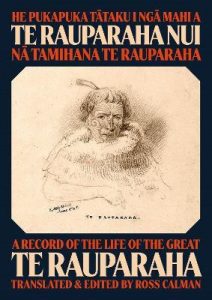Takapūneke, alongside the Britomart Monument in Akaroa, is part of a narrative that is as important as the Treaty of Waitangi Grounds in the Bay of Islands. The site of the Brig Elizabeth incident, was a blood thirsty start to a nation that started a chain of events that ultimately led to the Treaty of Waitangi.
When using this source for school or other use please reference: Marie Haley The Seventh Generation Tours Akaroa in the material.
“Akaroa is incredibly important in New Zealand’s bicultural/multicultural history. Akaroa has historic sites that explain all the steps that led up to the Treaty of Waitangi, British Sovereignty and the imperial race for New Zealand. Really it’s quite remarkable.”
Takapūneke is of immense spiritual and cultural importance to Tangata Whenua the indigenous Māori, Ngãti Irakehu whanau (family) of Ōnuku Rūnanga, they hold mana whenua over Takapūneke.
Takapūneke Reserve is at the southern end of Akaroa township, once known to locals as ‘Red House Bay’ for its red house that sits on the waterfront. It is a gentle 15-20 minute walk along Beach Road, past the Akaroa Lighthouse and Britomart Monument that leads you to the site of the Akaroa massacre.
Te Pātaka–o–Rākaihautū/Banks Peninsula is incredibly rich in history, with waves of settlement and already extensively named prior to European settlement.
It is little known that Takapūneke is one of the most important historic sites in New Zealand, that alongside other key historic sites in Akaroa creates a story ‘as rich as Waitangi’.
Together with other historic sites, Ōnuku and Britomart Monument within Akaroa harbour historian Harry Evison stated that Akaroa provides an even richer ‘set of narratives around the Nations identity than Waitangi.’
– Takapūneke is the first European involvement in intertribal warfare.
– Ōnuku is the place of the first signing in the South Island of the Tirity O Waitangi Treaty of Waitangi.
– Britomart Monument is the first demonstration of British sovereignty in an imperial ‘race’ to claim the South Island before the French
Akaroa’s story as a whole includes the Māori, British and French settlement stories of New Zealand, the story of New Zealand’s establishment as a country and the events that led up to the Treaty of Waitangi driven in part by the French Government backed Akaroa French settlement.
In the 2005 document Takapūneke – the other Waitangi historian John Wilson states that Takapūneke and Akaroa constitutes the ’missing link in the story of the Treaty of Waitangi.’ Onuku Rūnanga Chair Rik Tainui said at the opening ceremony that it should be the “Waitangi of Te Wai Pounamu” and ”I can see this site taking its rightful place as one of the most significant landmarks of Aotearoa”.
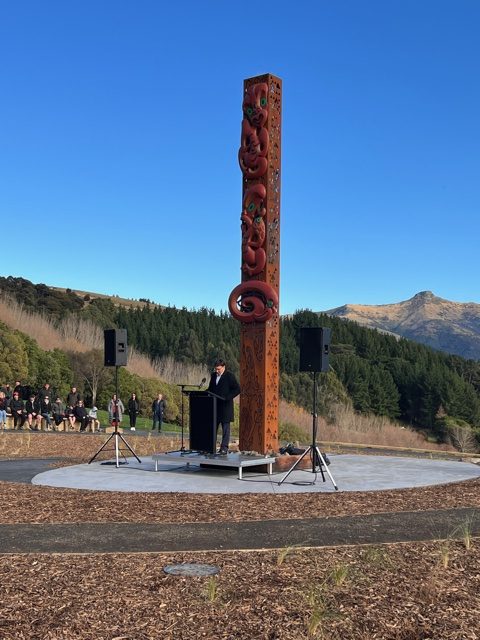
So, what happened at Takapūneke?
In the 1820’s Takapuneke was a key flax trading anchorage and village, with around 200 people living there. Te Maiharanui was the Ngāi Tahu upoko ariki (paramount chief) at the time.
Te Rauparaha was the Ngati Toa paramount chief based on the ‘keystone’ island of Kapiti at the edge of the Cook Straight, then known as ‘Entry Island’. Te Rauparaha had been stockpiling muskets and had attacked northern South Island pā (fortifications).
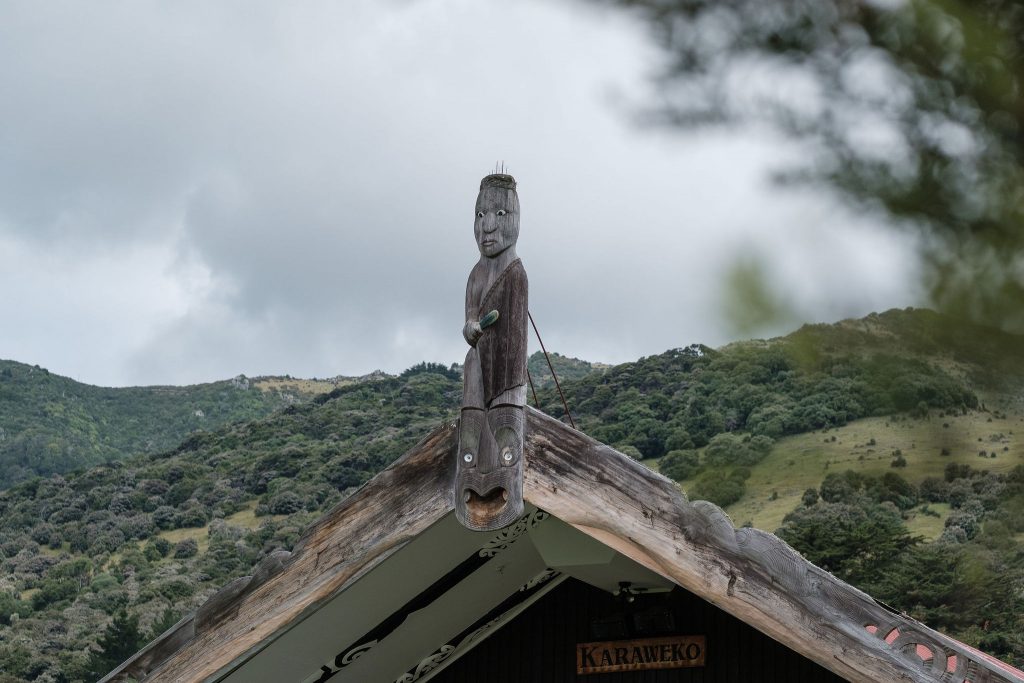
What caused the Takapūneke massacre?
At the Kaiapoi pā in 1829 Te Rauparaha’s favourite uncle and warrior Te Pēhi and other leading warriors were killed. Out of utu or revenge he returned to Kapiti Island and convinced a European captain, Captain Stewart to transport his war party south in disguise.
The Brig Elizabeth
Captain Stewart had the 400 tonne Brig Elizebeth, they called into Akaroa Harbour in early November 1830 and Captain Stewart called Te Maiharanui out onto his ship to trade flax, where he was captured. At night the warriors went ashore with the European crew and massacred the sleeping village.
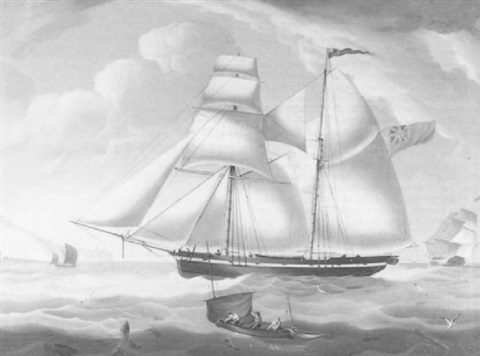
When was the Takapūneke massacre?
The Takapūneke massacre date is thought to be the 6 November 1830.
Captain Steward eventually received only some of the flax he was promised and returned to Sydney where he traded it and was imprisoned by the magistrate of NSW. Stewart was eventually released.
Why is Takapūneke important in New Zealand’s history?
Takapūneke is considered to be the first involvement of a European directly in inter-tribal warfare, there had been intertribal warfare, and incidents of European and Māori attacking each other, but this was the first European involvement directly in intertribal warfare, and it was so horrific.
This incident lead to the first discussions of European laws for Europeans in New Zealand and as a direct result in 1833 the first British resident to New Zealand, James Busby, was sent out to the Bay of Islands. (Ref: Te Wai Pounamu: The Greenstone Island, Harry C. Evison Pg 56)
The Missing Link – Only 1 in 10 New Zealander’s know of….
Due to French influence in the Bay of Island, in 1835 James Busby had 34 chiefs of 13 tribes sign He Whakaputanga o te Rangatiratanga o Nu Tirene: the Declaration of Independence of the United Tribes of New Zealand.
This was the document that was used to call up the chiefs again in 1840 to sign the Te Tiriti o Waitangi – The Treaty of Waitangi.
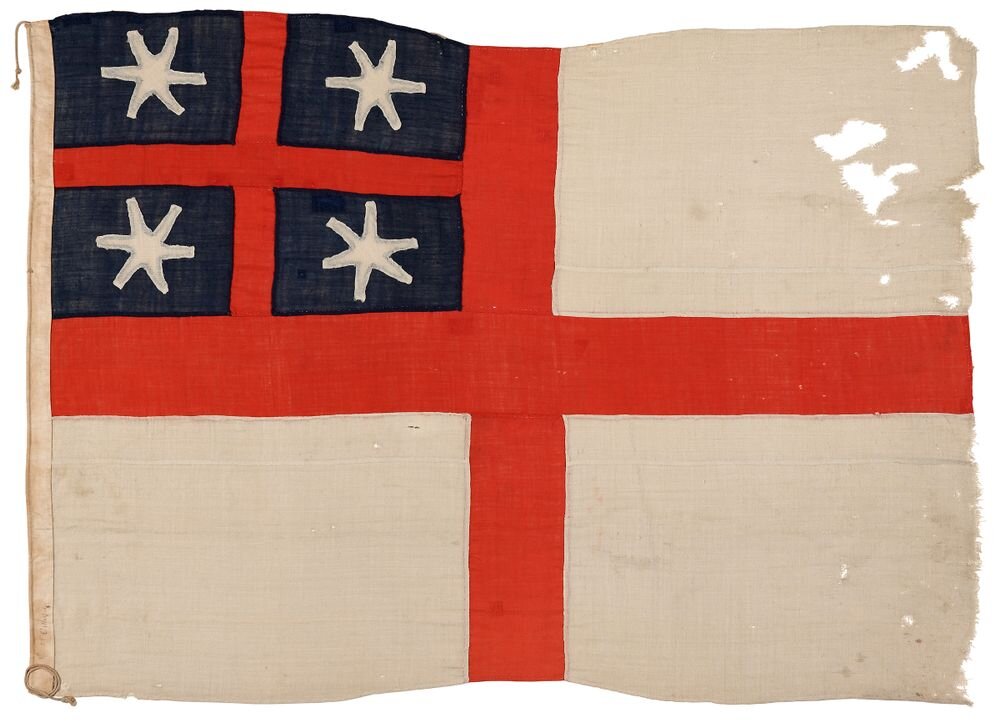
The Importance of Akaroa in New Zealand’s History
Akaroa is incredibly important in New Zealand’s bicultural/multicultural history. Akaroa has a set of historic sites that explain all the steps that led up to the Treaty of Waitangi, British Sovereignty and the imperial race for New Zealand. Really it’s quite remarkable.
The Britomart Monument and Takapūneke are one of the best places in New Zealand to discuss the Treaty of Waitangi and the bicultural history of New Zealand. The Britomart Monument explains the British and French influences that led to the writing of the Treaty of Waitangi, particularly the French settlement of Akaroa. The engraved text states ‘Subscribed for by the British, French and Maori Peninsula Residents’.
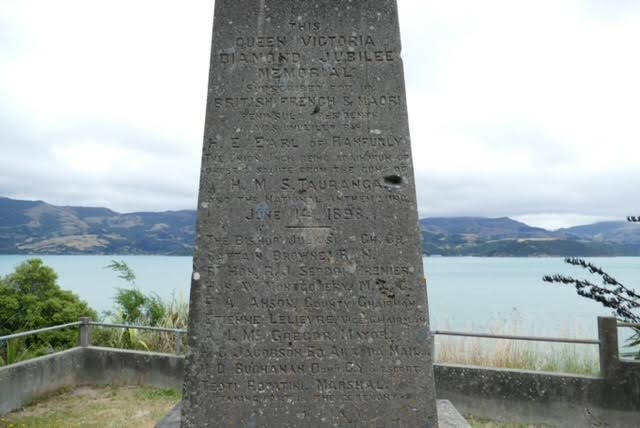
Who was Captain Stewart?
Captain John Stewart came from Southtown in Suffolk, and was the commander and one of the owners of the “Elizabeth.”
After he released Te Maiharanui, Stewart returned to Syndey and was imprisoned, statements were taken from his and his crew, but Stewart was released. There are varying accounts of what happened to him, some say drowned at sea, another that he died going around the Cape of Good Hope and his body was thrown overboard.
Cowell the Coward
Raised in the Bay of Islands John Vittoria Cowell became fluent in Te Reo Maori as a child, in 1830 he was the interpreter and trading master for Captain John Stewart on the Brig Elizabeth. Cowell translated between Te Rauparaha and Stewart.
Ōnawe Peninsula
It is often incorrectly believed that the Te Rauparaha attack on Te Maiharanui and Ngāi Tahu was at Ōnawe Peninsula, where it was in fact at the Takapūneke village.
However, in 1831 and 1832 Te Rauparaha returned again to attack Ngāi Tahu, without European involvement, as well as several other attacks on lesser known pā and village sites around Banks Peninsula.
Ōnawe was a well built double fenced fortification and on a prominatory point that allowed inhabitants to have advanced warning and preparation for any attack. There is a fabulous model of the Ōnawe Pā at the Akaroa Museum.

Ōnuku Marae
The survivors of Takapūneke and Ōnawe established Ōnuku and this was the main settlement when Europeans started to whale and settle on Banks Peninsula in the late 1830’s.
It was here at Ōnuku that the Treaty of Waitangi was first signed in the South Island on the 30 May 1840.
And here at Ōnuku Prime Minister Christopher Luxon attended Waitangi Day 2025.

From Taking Akaroa’s Waste to Becoming a Nationally Important Site
Takapūneke was the first place in Canterbury, and perhaps the South Island where cattle were landed in 1839. The bones of those killed at Takapūneke were gathered and burned and the land was used for farming and growing potatoes.
The place was wahi tapu for local Ngai Tahu, and the story not shared. As the ultimate insult the bay was used for the Akaroa rubbish dump and waste water treatment plant and in 1992 there were plans for subdivision for housing.
Takapūneke was registered in 2002 as a wahi tapu (sacred) site with Heritage New Zealand Pouhere Taonga (HNZPT).
In 2018 the Takapūneke Reserve Management Plan was adopted and a co-governance group, including members of Ōnuku Rūnanga and representatives of Christchurch City Council, was formed to implement the Reserve concept master plan.
The restoration plan is underway in joint management with CCC and Onuku Runanga, to restore the mana and mauri to the land and to the people. The design is founded upon kaupapa Māori concepts with significant pou Pou tu te Raki o Te Maiharanui, which was unveiled on the first Matariki public holiday in 2022.
Watch the moving dawn ceremony for Onuku whanau and guests HERE.

Read the CCC Takapūneke Conservation Report and the CCC Takapuneke Conservation Report 2012


